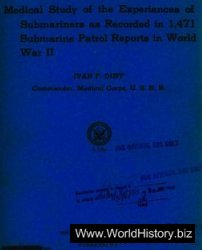The Sinai Peninsula is a parched desert area in the form of an inverted triangle, serving as both a connecting corridor and a dividing barrier between Egypt and Israel. It provides either side with an ideal jumping-off
Ground in an attack against the other. The northern side, on the Mediterranean coast, is 134 miles long; its western side, along the banks of the Suez Canal and the Gulf of Suez, is 311 miles long; and its eastern side, along the Gulf of Aqaba, is 155 miles long. Topography in the northern half ranges from undulating sand dunes and ridges, palm groves and salt flats along the coastal plain, to a central hilly area with a vertical range of ridges reaching heights of up to 3,500 feet. Here there are but limited axes for passage, through which Egypt had constructed main roads, utilizing the negotiable passes between the high ridges and the deep, powdery-sandy wadis. These routes ran eastwards from the Suez Canal area: from Kantara to El-Arish in the north, and from Ismailia to Abu Ageila in the centre. Farther south, they had built a road connecting the southern Canal town of Suez with the village and training base of Nakhle, east of the steep Mitla Pass. North-south connecting roads had been constructed in the west, between Kusseima, Kuntilla and Ras El-Naqb, parallel to the Israel-Egypt frontier, and in the central plain connecting El-Arish to Bir El-Hassne and Nakhle.
The lower half of the peninsula represents the most extreme forms of desert topography — steep, saw-tooth mountain ranges, deep powdery wadis devoid of water, greenery and negotiable roads. The only passable road built in this area by the Egyptians had been, in fact, the coastal road connecting Suez, Ras Sudar, A-Tor and Sharm El-Sheikh along the coast of the Gulf of Suez.
The nature of the territory dictated over the centuries the course of warfare in the Sinai, a form of warfare concentrated on the negotiable routes and on the critically-strategic ridges overlooking such routes. In the Sinai, there are no rivers, forests or jungles: the conflict is predetermined by the demands of the desert, and this in fact is clear from the battles waged there in 1956.
The Egyptian military presence in the Sinai up to 1953 had been purely defensive, with no more than one reinforced battalion, the principal task of which was to combat the widespread drug-smuggling operations. This ended abruptly when Nasser constructed roads — not for civilian use but to ensure efficient passage for military transport. Air bases were located in the Sinai to place the Egyptian Air Force in close proximity to potential targets; and army camps were built at strategic centres on the main axes, with large storage warehouses, in order to ensure a rapid and effective supply system.
On the eve of the campaign, in October 1956, the Egyptian force in the Sinai was based on two infantry divisions, — the Palestinian 8th Division based in the Gaza-Rafah area, and the 3rd Infantry Division, deployed in the El-Arish-Abu Ageila area. An armoured brigade based in Bif Gafgafa alternated between its base and Bir El-Hama, west of Abu Ageila, on the central Sinai axis, while an infantry brigade held the high ground west of the Mitla Pass, around the port of Suez. Other commanding sectors of the central and southern parts of the Sinai Peninsula were patrolled by a light Mobile Frontier Force which was mounted on armoured jeeps and troop carriers.

Against this force, Israel put into the field some ten brigades — six infantry (1st, 4th, 9th, 10th, 11th and 12th), 202 Parachute Brigade, the 7th Armoured Brigade and two mechanized brigades, the 27th and 37th.




 World History
World History









